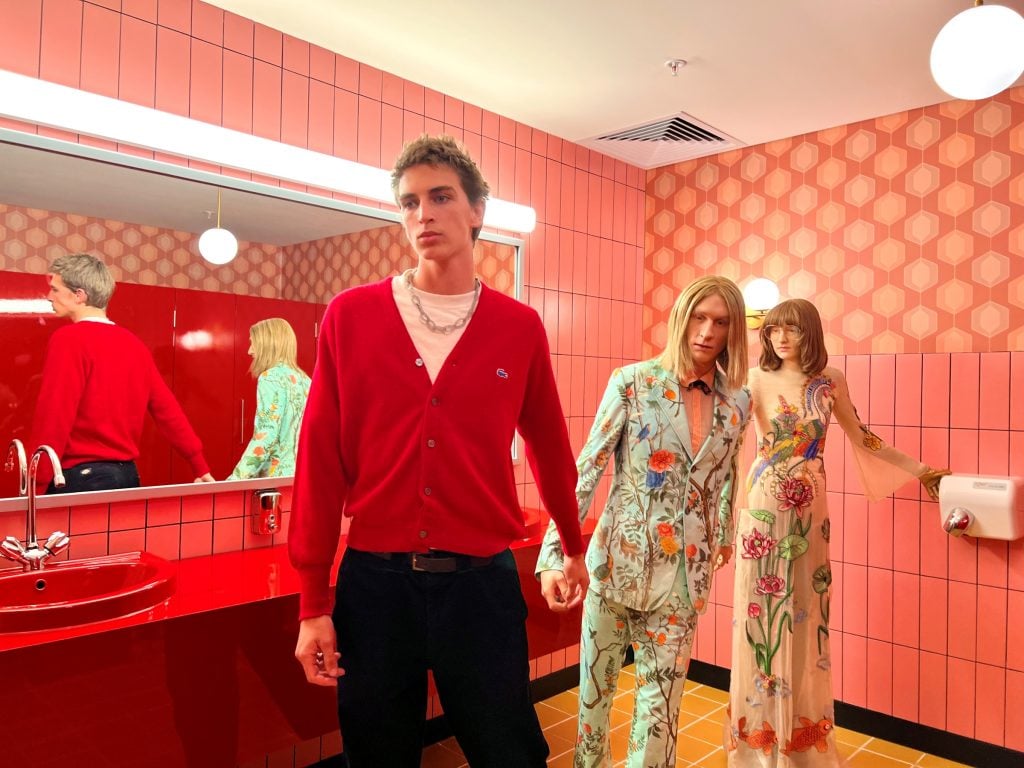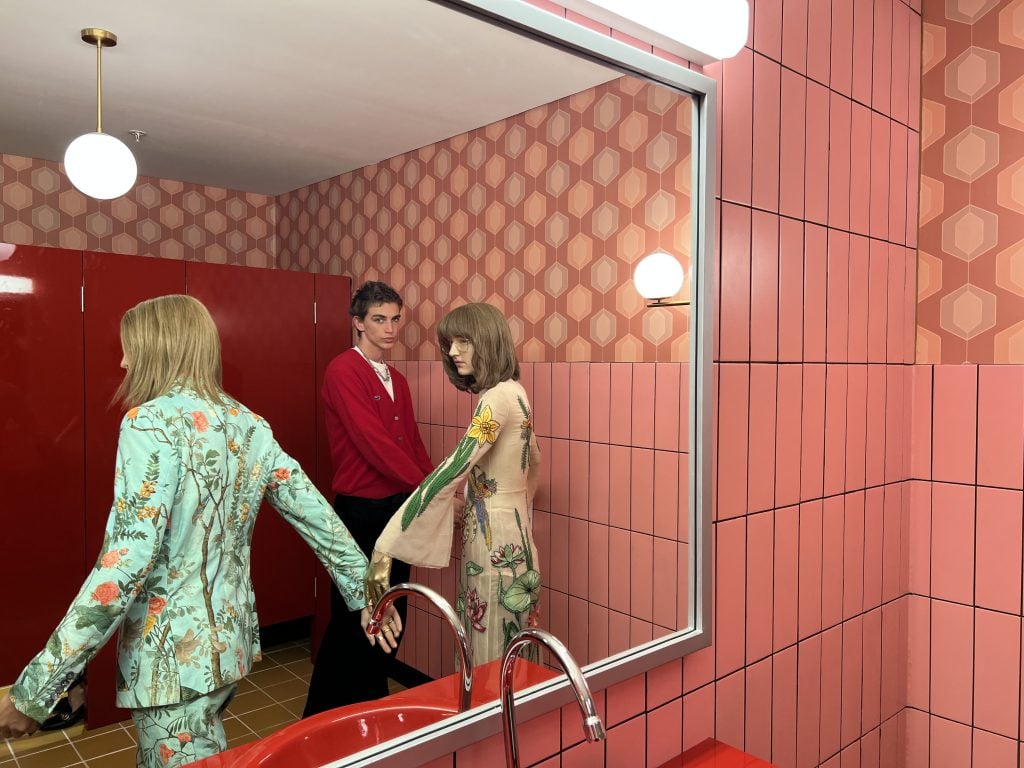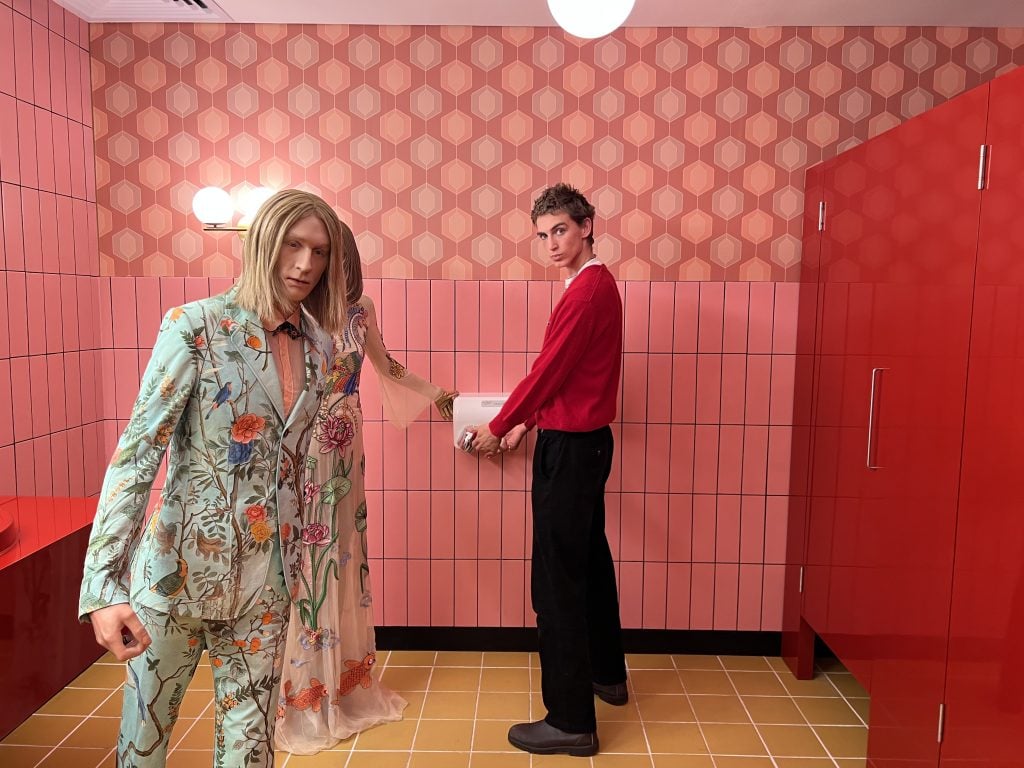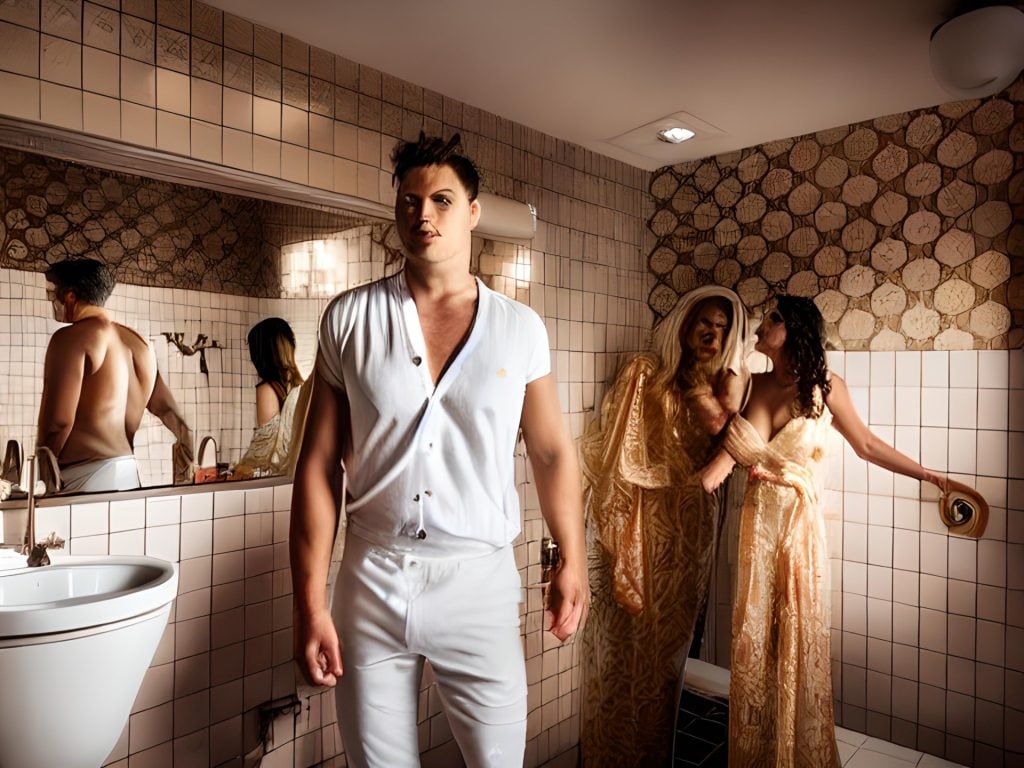Art & Tech
An Australian Photographer Was Disqualified From a Photo Contest After Her Submission Was Mistakenly Deemed A.I.-Generated
The contest organizers were apologetic, but "paranoid about A.I.," said Suzi Dougherty.

The contest organizers were apologetic, but "paranoid about A.I.," said Suzi Dougherty.

Adam Schrader

An Australian photographer’s work was disqualified from a photo contest after being mistakenly deemed to have been generated by artificial intelligence.
Suzi Dougherty, an actress in the Sydney suburb of Waverly, had entered a photo contest run by the print shop Charing Cross Photo seeking to award the best local fashion photographs. She said she was “shocked” when she found out her photo was disqualified on suspicions it was created with A.I.
Dougherty called the mix-up an “honest mistake” and said she’s still an “avid fan” of the print shop, which she said is a “great little store.” Still, the case is the latest test for how artificial intelligence impacts artists and shows how photo experts appear to be grappling with the capabilities of the technology.
In an interview with Artnet News, Dougherty said the image she selected was one of several she had taken during a mini photoshoot with her 18-year-old son Caspar at “Gucci Garden Archetypes” in Sydney, a now-ended immersive exhibition that explored the fashion giant’s advertising campaigns.
“I did a few different setups. So there were numerous setups in the room. I was in the room for about 10 minutes and felt bad because people were queuing,” she said. “There were different photos but I liked this the best.”

A variant of the photo Dougherty submitted to the photo contest. Photo courtesy of Suzi Dougherty.
In the image she selected, Caspar is seen wearing a red Lacoste sweater over a white T-shirt and dark slacks with a large chain necklace. He appears to be mid-gait, looking stoically to the left of the frame with his left hand reaching backward to grasp that of a male mannequin behind him.
“I had this narrative that they were his two friends in the nightclub bathroom. I had the whole story around it and this was definitely the most narrative one,” Dougherty said, describing her process in taking the photograph.
One variant, reminiscent of Matisse’ Dance, shows Caspar apparently holding the hands of the female mannequin being led by the male mannequin as reflected in the bathroom’s mirror. Another shows a wide shot of the bathroom with Caspar at the hand dryer and the woman looking at the camera.

One variant shows a wide shot of the bathroom with Caspar at the hand dryer with the woman looking at the camera. Photo courtesy of Suzi Dougherty
“I legitimately cannot think of why they thought it was A.I.,” Dougherty said of the photo she chose.
“I was like seriously shocked because I don’t really follow A.I.—not into it and don’t make it. I always thought it would be something spacey and digital,” she said. “So I was genuinely kind of confused in a naïve way, now that I know a little something about it after this week.”
Dougherty, who is not a professional photographer, added she took the photo with her phone and has since learned that A.I. processes are already increasingly being used in cameras and phone cameras. She added that her son has since tried recreating the photo with A.I. with poor results.

Suzi Dougherty’s son Caspar tried recreating the contested photo using artificial intelligence with poor results. Photo courtesy of Suzi Dougherty
She decided to enter the photo contest after a friend came over to her home and saw a print of the photo she had made for her late mother who loved fashion but could not go to the exhibition.
“I found out the whole thing on Instagram that I had been disqualified,” Dougherty said. “I thought it was quite funny… and then I did speak to them and they were really apologetic and they said they were paranoid about A.I.”
Iain Anderson discusses disqualification
Iain Anderson, the owner of Charing Cross Photo, discussed his thought process in disqualifying Dougherty’s photo with Artnet News.
“The mannequins. I just thought the faces were just too … the overall feel of it just felt fake. It was just a really well-taken photograph. Her son is a good-looking guy kind of looked mannequin-ish. Too perfect to be true,” Anderson said.
Anderson said he and his shop had been talking a lot about artificial intelligence in the lead-up to the photo contest. He recounted an instance when one of his friends, and a client of the shop, brought in two pictures and asked the store owner which was his.
“I’ve been looking at his stuff for five years and I couldn’t pick it. I got it wrong. I asked so ‘who’s the guy?’ and he said it was made with A.I.,” Anderson said. “I noticed where there was a mistake, a slight deviation from reality, and this image was entered into a competition and it won.”
Anderson, who regularly spots errors in photographs before printing them, said he did not see any imperfections in Dougherty’s photo.
“I see photos all the time. I know where the imperfections might lie in terms of prints. I was doing some prints late last night and I was like what’s going on here, something is wrong, and I had to reprint,” he said. “I can spot an error before I print it too. This is different though, there were no errors in this image.”
Still, he had suspicions about the picture.
“I think we used that image as sort of a pincer to talk about A.I. and photography,” Anderson said. “I do have a lot of concerned clients, people who do serious commercial work, who probably will not have clients in a few years because of A.I. generation.”
Anderson said he and another woman were scoring the 23 submissions the print shop received for the photo contest late in the night when he made the “stupid decision” to disqualify Dougherty’s photo.
“It was a compounding perfect storm,” he said.
Anderson said Dougherty’s photo would have been among the top images but would not have won the photo contest.
“She’s a lovely lady. Thank God she’s very gracious and forgiving,” he said. “A.I. is learning and I’m trying to learn as well.”
Anderson added that he does use tools that use A.I. technology himself in his store — but distinguished them from A.I. generated images.
“Topaz amends some human issues that have been created. Some people come in and their image is too soft and they haven’t got it right in-camera so I need to help them print it,” he said.
“I saw this wonderful shot this guy did and just couldn’t print it at the size he wanted it printed at. I put it through Topaz and it didn’t ultimately work but I got it up to about half the size he wanted. They benefit the industry for now.”
Dougherty and Anderson are now working together to sell the image as a limited edition run of prints.
More Trending Stories:
An Israeli First-Grader Stumbled on a 3,500-Year-Old Egyptian Amulet on a School Trip